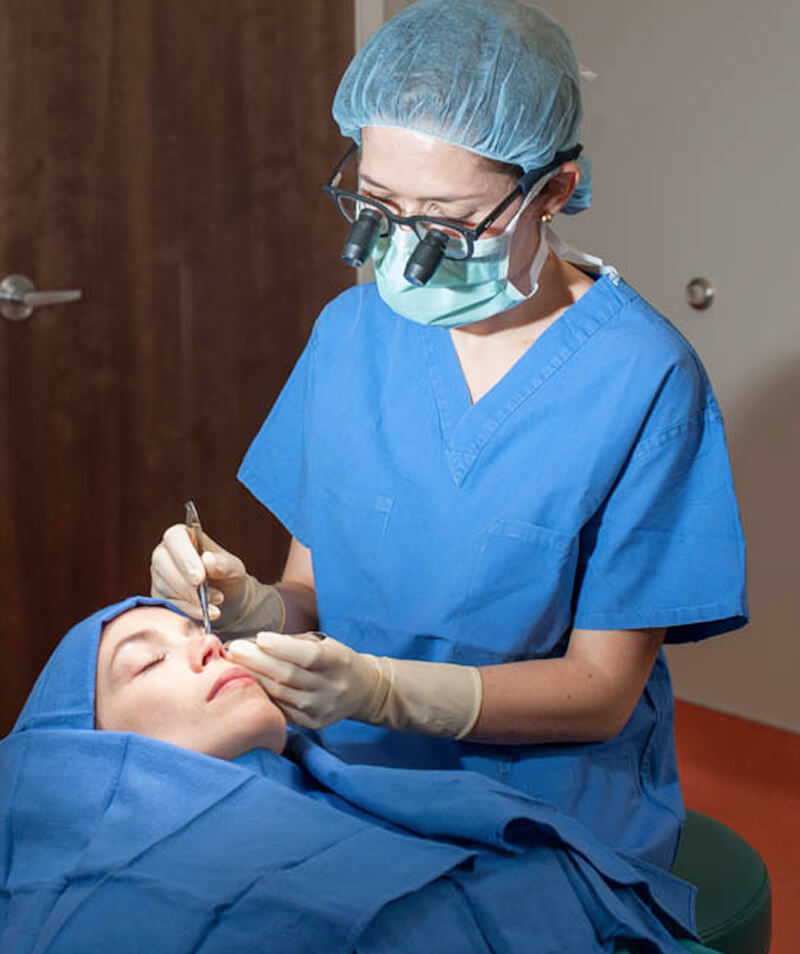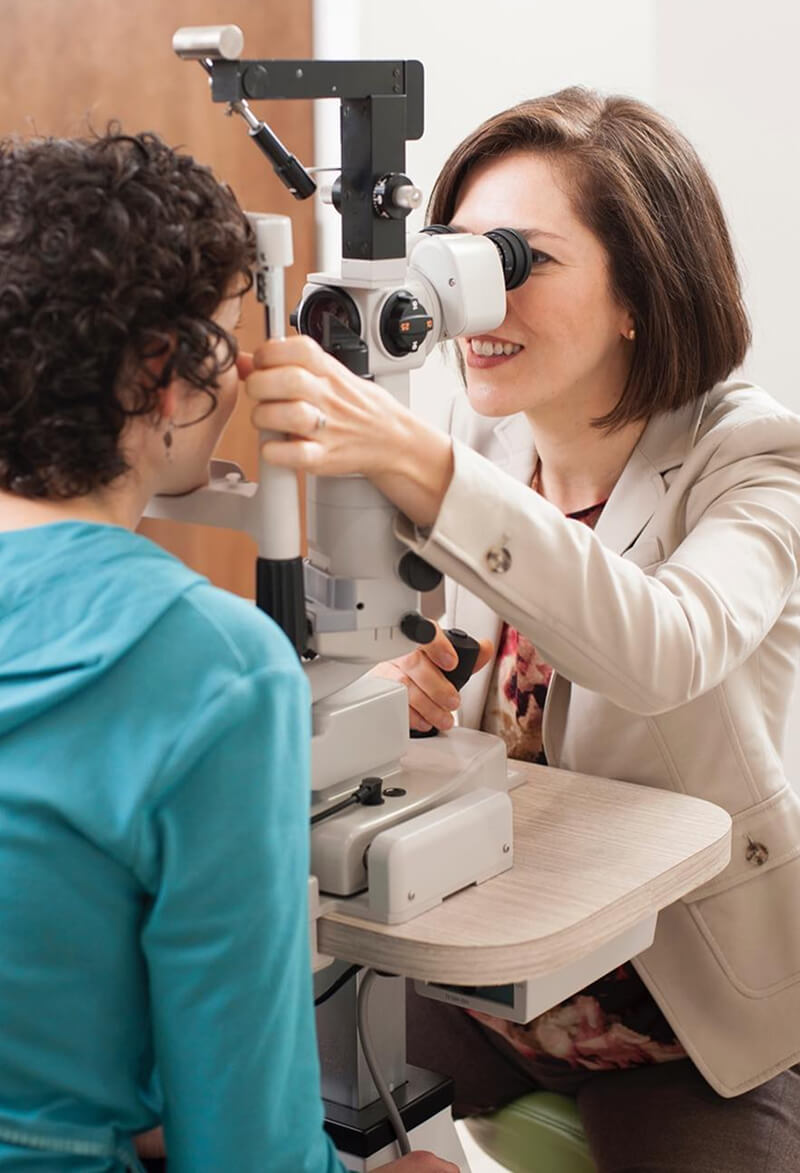Most droopy eyelids and eyebrows require surgery to tighten the eyelid muscle and lift falling brow tissue. Depending on the severity of the droopiness, this procedure may be covered by insurance. Most of the time, the ptosis has to be severe and affect vision in order to warrant a necessary medical procedure. Milder forms of ptosis may fall under cosmetic surgery and payment may be the responsibility of the patient. An office test called a visual field is used to demonstrate the visual blockage. Photographs are taken to document how far the droopy eyelid or brow is covering the eye, and these are submitted to insurance companies.
There are a few instances, like those suffering from myasthenia gravis, that may improve with oral medications.
Tissue is removed by making an incision just above the eyebrow if the brow hair is thick, or by camouflaging the scar within the forehead wrinkles.
An irregular, angled incision is made just behind the hairline. Skin is then released off the frontalis muscle, or forehead lifting muscle, and excess skin is overlapped and removed. The preserved hair follicles grow back through the incision, camouflaging the incision nicely.
Ptosis repair surgery is performed under local anesthesia or intravenous sedation. Once anesthesia is administered, the levator muscle is reattached from either the front (external side) or back (internal side) of the eyelid.
If the external side is used, some skin may be removed to lighten the eyelid and improve appearance. The patient may be woken up momentarily to check the contour, height, and symmetry of the eyelids, and then sedated again. If both upper eyelids are droopy, it is best to repair them at the same time to ensure symmetry.
When repairing the muscle detachment from the internal side, the patient can be kept asleep for the entire surgery. Measurements are taken before surgery to determine the correct amount of tightening and predetermined measured amount of tissue is removed using a special instrument. This internal approach can sometimes avoid a skin incision altogether and tends to heal rather quickly.
For eyelid ptosis, the skin incision typically heals as a very fine line. Dr. Schiedler is exceptionally meticulous and skilled at using fine hair-like sutures to help create a natural-looking result. In children and some adults, she may opt for tiny clear dissolving sutures when performing ptosis repair to correct droopy eyelids. Swelling may cause blurry vision or incomplete blinking temporarily. This is entirely normal and typically resolves as the swelling goes away.
Brow lift incisions may be pink for weeks or months, depending on skin type. Numbness or sensitivity in the incision sites may last weeks or months, but typically all numbness is gone by six months.
Strenuous physical activity should be avoided immediately after surgery and during recovery. You should also protect your incisions from UV or sun exposure to prevent darkening of the skin.
Vision improvement will be immediate, but final results may take as little as a few weeks. However, depending on healing rates and other factors, some patients don’t report seeing the final results until months later.
The eye area is extremely delicate and should always be entrusted in the hands of a specialized oculofacial plastic surgeon. Dr. Vivian Schiedler uses her training as an ophthalmologist and oculofacial plastic surgeon to successfully diagnose and treat ptosis while ruling out serious causes. Her experience helps her achieve the best possible aesthetic and functional results. If you believe you are suffering from ptosis that is making you self-conscious or interfering with your vision, contact Oasis Eye Face and Skin at (541) 449-9555 to schedule a consultation.






